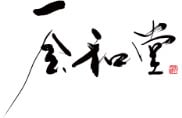大津絵の歴史
大津絵は滋賀県大津市でおよそ 400 年前に誕生した独特な民画で、当時は“東の浮世絵、西の大津絵”と言われました。江戸時代初期、京の都へ通じる東海道五十三次の大津宿 (大津の追分、大谷) で無名の絵師たちが軒を並べ、街道を往来する旅人等に安価な神仏画を描き売ったのが始まりだと言われています。貧しき大衆にとってその神仏画は鑑賞用ではなく、日常の礼拝や法要に使い回されるという実用性を持っていました。また、キリシタン禁制下の宗門改めにおいては、大津絵の仏画はキリシタン信者でないことの証しとして使われることもありました。
やがて時代の変遷と共に画題も世俗絵に推移します。浮世絵の影響も受け数々の美人画や武者絵が描かれる一方で、人物や鬼、動物をモチーフとする世相の風刺画や戯画も数多く描かれます。後に心学の影響を受け道歌が添えられた画題も沢山存在します。大津絵の画題としては一説には 120 ほどあったと言われています。また、大津絵は職業画家や文人にも愛され多くの絵変わりも誕生しました。
History
Otsu-e paintings are a unique folk art born in Otsu City, Shiga Prefecture, Japan approximately 400 years ago. It was well-known enough to have been described as “Ukiyo-e in eastern Japan and Otsu-e in western Japan” in those days. In early 17th century, nameless painters began painting inexpensive religious images and sold them to the travelers and locals along the Tokaido Road. They say this is the origin of Otsu-e pictures.
Poor common people bought those Buddhist paintings not for their appreciation but for a practical uses such as daily prayers or Buddhist memorial services. When the government banned Christianity, Otsu-e’s Buddhist paintings were used as an excuse.
As the time passed, those Buddhist paintings demand were gradually replaced with secular paintings. Apparently Ukiyo-e paintings gave some influences to Otsu-e motif. It started depicting beautiful women or warriors, at the same time secular paintings became caricatures portraying people, ogres and animals. Otsu-e then developed with the times under the influence of Shingaku moral lessons and doka (Japanese poems about moral teachings) were attached to the side of many Otsu-e motifs. One theory says that over 120 motifs have existed as Otsu-e. Not only Otsu-e painters but the other genru painters or literatis also loved to make Otsu-e and many Otsu-e spinoffs were born.
大津絵ならではの特色
大津絵の特色の一つは銘が入っていないことです。これは一つには制作手法によります。大津絵は浮世絵のようにスター絵師がいたり、版元が版権を持っているような民画ではありません。安価な土産絵で食べていくには、店頭でいかに素早く描いて数を売りさばくかが課題でした。一枚の絵を一人で仕上げていては追い付かず、一家総出で取り組みます。型紙を用いて先に色を置く合羽刷りという手法を駆使し、定規や分廻しというコンパス、画題によっては版木も使います。最後に絵師が肉筆で大胆に仕上げていく大津絵。この線こそが大津絵の命です。銘も入れずに無心に筆を運び、数をこなすことで自ずと技量を上げた絵師たち。古大津絵を掲載した画集などで同じ画題を横並びに眺めると、絵師ごとの個性、その闊達な筆致に思わず頬が緩みます。しかし、いざ描いてみると、自分がどこで満足するかによりますが、一見簡単に描けそうな曲線に実は相当な習熟を要することがわかってきます。そうなるとあなたも「大津絵通」です。
Features unique to Otsu-e
One of the characteristics of old Otsu-e is that the paintings do not come with signatures. This has something to do with its production process. Unlike Ukiyo-e paintings, star painters didn’t exist in Otsu-e folk painting. Otsu-e makers sold paintings as inexpensive as a meal. Therefore they had to complete and sell as many paintings as possible on demand to make their living. In many cases, Otsu-e was run as a family business. Such utensils as stencils, rulers, compasses and wood blocks were used to facilitate production processes by each member. In the final process the work was finished up by ink brush. These brush strokes are the Otsu-e’s real gems. They made the works without signing and completed tens of thousands of paintings earnestly, which inevitably raised their skills.
Looking at the same Otsu-e motifs side by side in Otsu-e catalogs, you’ll be pleasantly surprised at each painter’s individuality and their fluid brush strokes. But once you try to replicate a cursive line which looks very simple at first glance, you would find that such simple cursive lines would require proficiency and lots of practice, although it would depend how much quality you would want in your work. If you agree, you are already an Otsu-e connoisseur.

十三仏図
(大津市歴史博物館所蔵の古大津絵)
The image of Thirteen Buddhist Deities
(Collection of the Otsu City Museum of History)

鷹匠図
(大津市歴史博物館所蔵の古大津絵)
The image of Takajo (Falconer)
(Collection of the Otsu City Museum of History)

提灯と釣鐘図
(大津市歴史博物館所蔵の古大津絵)
The image of Lantern & Hanging Bell
(Collection of the Otsu City Museum of History)






